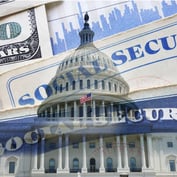(Bloomberg) — President Barack Obama sent Congress a $4 trillion budget that would raise taxes on corporations and the nation’s top earners, spend more on infrastructure and housing, and stabilize, but not eliminate, the annual budget deficit.
The spending blueprint challenges Republicans to make politically thorny choices between defending current tax rates for the wealthy and Obama’s proposals to boost spending for the middle class, the Pentagon and companies that build domestic infrastructure.
It also plays to the president’s Democratic base with proposals to increase spending for domestic programs such as education and child care and expanding Social Security benefits for same-sex couples.
More than a fiscal plan, the budget sets the terms Democrats want for the political debate heading into the 2016 elections. Addressing income inequality has become a mantra for Democrats from Obama to presidential nomination front-runner Hillary Clinton, and some of the Republican contenders have taken up the issue as well.
The budget plan for the fiscal year starting Oct. 1, released this morning in Washington, backs up Obama’s recent talk about directing assistance to the middle class, administration officials said. Rather than dialing back his goals after Republicans expanded their House majority and took control of the Senate in November’s midterm elections, the president is pursuing a more aggressive strategy.
‘Envy Economics’
Republicans were out with criticism even before the budget documents arrived at the Capitol.
“What I think the president is trying to do here is to, again, exploit envy economics. This top-down redistribution doesn’t work,” Representative Paul Ryan of Wisconsin, chairman of the House Ways and Means Committee, said on NBC’s “Meet the Press” on Sunday. “It may make for good politics. It doesn’t make for good economic growth.”
Congress is under no obligation to follow Obama’s budget plan, and most of his major proposals will be ignored by House and Senate Republicans as they form their own blueprint for spending and taxes.
Obama’s plans to assist lower- and middle-income taxpayers include underwriting the cost of community college for most students, tripling the child tax credit for families with kids under 5 years old, and creating a $500 “second earner” tax credit for families in which both spouses work. He had more room to do that without adding to the deficit as job creation brings in more tax revenue and the economy keeps expanding. Democratic support
“His emphasis is on growing jobs and boosting paychecks, but doing it in a fiscally responsible way,” Representative Chris Van Hollen of Maryland, the top Democrat on the House Budget Committee, said in an interview Sunday. “He’ll have broad and deep support from Democrats.”
The president’s fiscal plan projects a 2016 deficit of $474 billion. The shortfall would represent 2.5 percent of gross domestic product, a level that many economists regard as sustainable, down from a projected 3.2 percent in fiscal 2015. It wouldn’t rise above 2.6 percent of GDP in any year for the next decade under the president’s budget, even as the absolute numbers rise.
Future deficits
In fiscal 2017, the nominal deficit would narrow to $463 billion, or 2.3 percent of GDP. It would grow in each of the following years, from $479 billion in fiscal 2018 to a high of $687 billion in fiscal 2025.
Those figures are substantially less that the record $1.4 trillion deficit in 2009, the year Obama took office and the U.S. began pulling out of the worst recession since the Great Depression.
On the tax front, Obama wants to raise the top rate on capital gains and dividends to 28 percent from 23.8 percent and impose levies on asset transfers at death, closing what the White House calls the “largest capital gains loophole” in the tax code.
The president’s plan pits drug and technology companies that keep earnings overseas out of reach of U.S. taxes against firms that build roads, bridges and mass transit systems. He wants to fund $478 billion in infrastructure work over six years in part by applying a 14 percent tax to profits that are parked outside the country.
Potential compromise
Obama’s corporate tax plan, which creates a narrow opening to talk about a business tax overhaul with Republicans, includes a 19 percent levy on future foreign earnings for U.S. companies. The administration is no longer insisting that overseas profits be taxed at the 35 percent top U.S. corporate rate.
He’s also setting up a confrontation between Republican defense hawks and spending hawks by offering a $38 billion increase for national security programs over current budget caps and $37 billion more in discretionary spending for domestic programs. His proposal to relax those spending limits, known as sequestration, would put discretionary spending for fiscal 2016 at $1.091 trillion, which is $74 billion above the limits.








 February 02, 2015 at 10:33 AM
February 02, 2015 at 10:33 AM










